Building of the Day: 213 17th Street
Brooklyn, one building at a time. Name: Thomas Pitbladdo house Address: 213 17th Street Cross Streets: 4th and 5th Avenues Neighborhood: South Slope/Greenwood Heights Year Built: Before 1886 Architectural Style: Italianate, maybe Architect: Unknown Landmarked: No, but deserves some kind of recognition The story: This one was a great journey into Brooklyn history. Ever since…
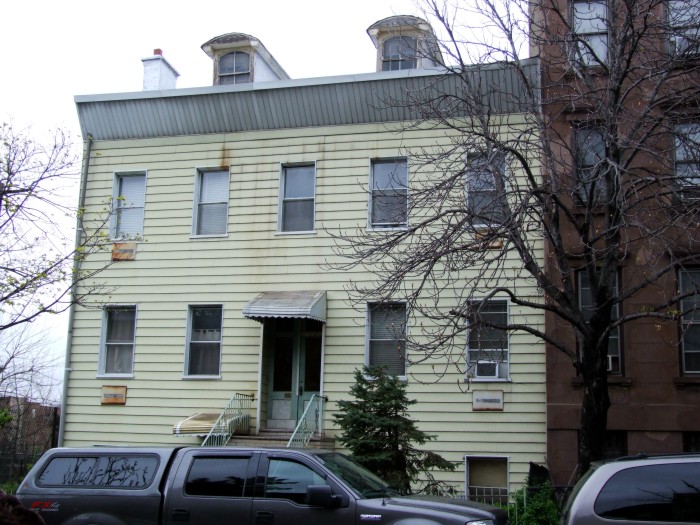

Brooklyn, one building at a time.
Name: Thomas Pitbladdo house
Address: 213 17th Street
Cross Streets: 4th and 5th Avenues
Neighborhood: South Slope/Greenwood Heights
Year Built: Before 1886
Architectural Style: Italianate, maybe
Architect: Unknown
Landmarked: No, but deserves some kind of recognition
The story: This one was a great journey into Brooklyn history. Ever since I’ve strolled around this area the summer before last, I’ve been curious about the history of this part of the neighborhood. There is very little information available about this part of town, and it must be gleaned like needles in a haystack. This house especially intrigued me, because not only was it an anomaly, in terms of style, it was also a survivor. The ramp to the Prospect Parkway runs right next door, and the fact that the house survived the construction and the placement of the road is just remarkable. Was that an accident of geography, or the influence of a prominent owner? Who lived here, and what was their story? I was lucky enough to find out more than I expected.
I thought the house was clapboard under the aluminum siding, the curse of the South Slope, but a look on several maps proved me wrong. This house is masonry under here, perhaps brick or stucco. From the style of the dormers and the front door, I’d say it was an Italianate, built in the 1870s. It was probably one of the earliest masonry houses on the block. Maps from 1887 show several wood framed houses here, as well, along with row houses. Several of the free standing frame houses were where the access road is today.
The house belonged to Thomas Pitbladdo. There were several spellings of his name, complicating research, but I was able to find an entry in the Brooklyn Eagle in 1891, where Mr. Pitbladdo got a permit to change his flat roof to a peaked one. It was going to cost him $200. That was the starting point, and researching Thomas Pitbladdo’s name became an adventure in Brooklyn history.
It turns out that the man with a rather strange name was practically a household name in this part of Brooklyn. Thomas Pitbladdo, born in 1832, was the son of William Pitbladdo and his wife, Cherry Humble Pitbladdo. They were Scottish immigrants who came to Brooklyn from Ireland, in 1836. William was a stone mason, and he would start a dynasty whose name lives on to this day.
William Pitbladdo established a monument business near Green-Wood Cemetery that was in operation almost as long as the cemetery has been open. Thomas took over the business in 1854, establishing a shop across the street from the cemetery. He was quite good, he was right there, and business was steady. As every Brooklynite knows, Green-Wood was THE place to be buried, and people were, pardon the pun, dying to get in. The Pitbladdo’s were soon quite wealthy. A great many of Green-wood’s monuments were made by the Pitbladdo Company, well into the 20th century and more.
Thomas and his wife Josephine raised seven children in this house. At least two of them got married here, one in 1898. Josephine died here in 1900. Thomas Pitbladdo had other interests besides the monument business. He was active in politics, and ran for alderman in the state assembly from his district. Like many wealthy businessmen, he was also involved in banking. He was a trustee in three Brooklyn banks, and was a director of one, the Kings County Bank.
He was also quite active in the YMCA. He raised funds for the organization and sat on the Brooklyn board of directors. His other love was his church. He was a trustee and the treasurer of the Brooklyn Tabernacle, the Rev. Talmage’s church which was famous for its pastor and his skills in oratory, as well as for the fact that it burned down three times before disbanding. I wrote a Walkabout series on Talmage’s Temple. When the final Talmage church, located in Clinton Hill, burned down, Mr. Pitbladdo was one of the last people to get out of the burning building.
After Thomas retired, the business was taken up by a son, Grant. He established the Pitbladdo Stone works at 242 25th Street. Willard and Kenneth Pitbladdo were the fourth generation to take up the business. I looked it up, and they are still there. It’s now the Brooklyn Monument Company, J.R. Pitbladdo, Inc. Amazing. Thomas Pitbladdo died at the ripe old age of 89 in 1920.
All of the Pitlbaddo clan is buried in Green-wood, with nice monuments befitting the family. Solid, respectable granite monuments, much like the family home, which was surely quite impressive before the siding was slapped on there. The size of the building is misleading now, since the highway is such a distraction. But it’s a big house, almost 37 feet wide and 63 feet long. Looking at it now, who would imagine that the house had such a storied past? You never know. GMAP
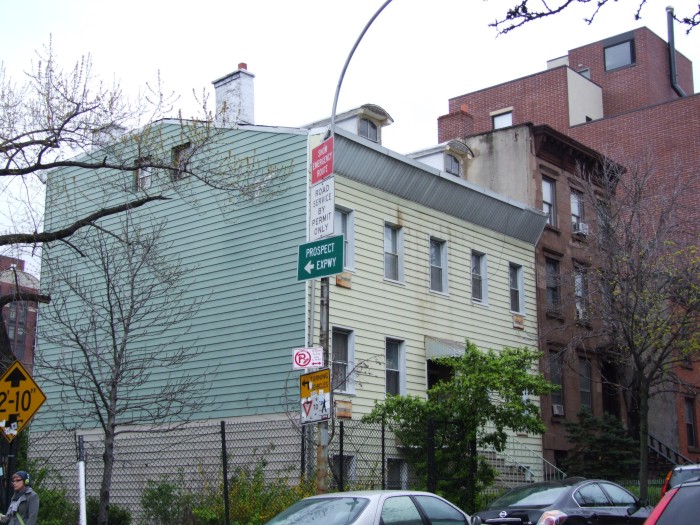
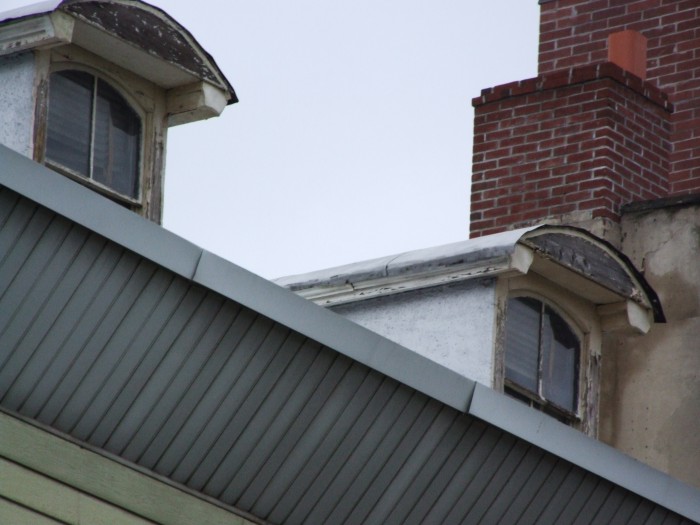
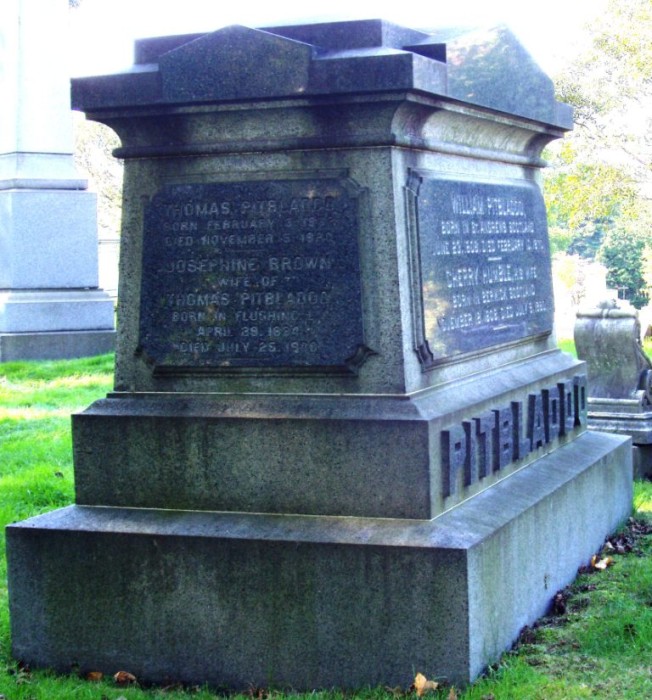
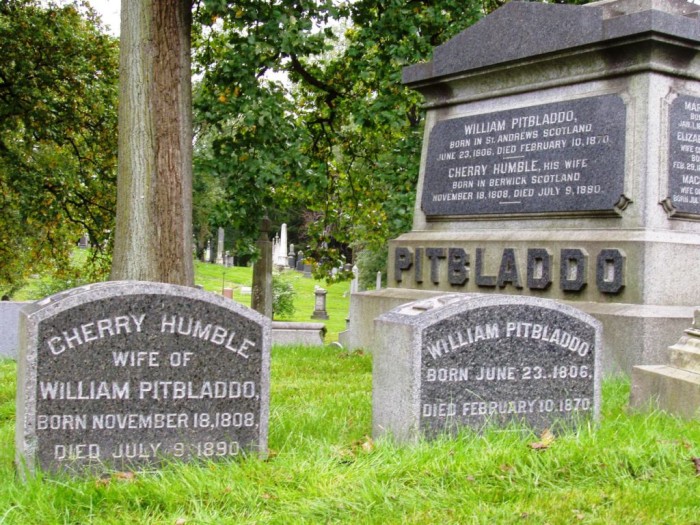
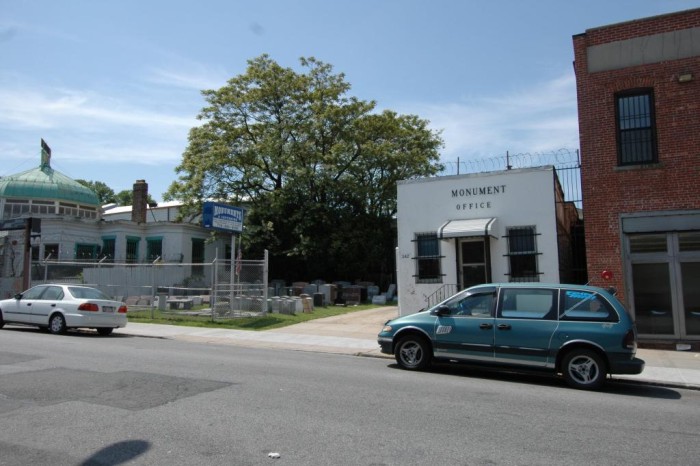









I own a house on this block and am glad to see 2 recent articles about houses on this block. Before the highway was built there was a hospital down the block on 4th Ave., and a lot of doctors lived on this block. How can I find out information on my house like the kind you found out about these houses?
So glad to see this house featured! Walk by it every day on the way to the train- and actually suggested via comments in the column a while back that this one get featured- real surprise that it is masonry underneath.
This whole area has an interesting history-
This house would be incredible with some love. This block in general features an incredible mix of great houses fancy and humble- mostly masonry- including an incredible romanesque/queen anne house with really fine detailing near the southeast side of the block.